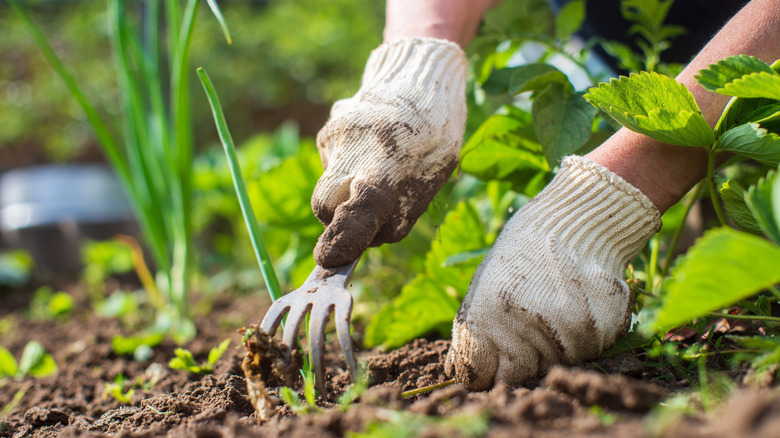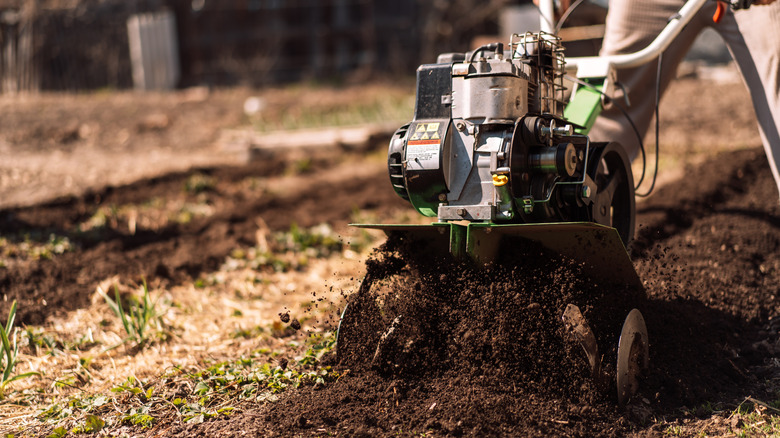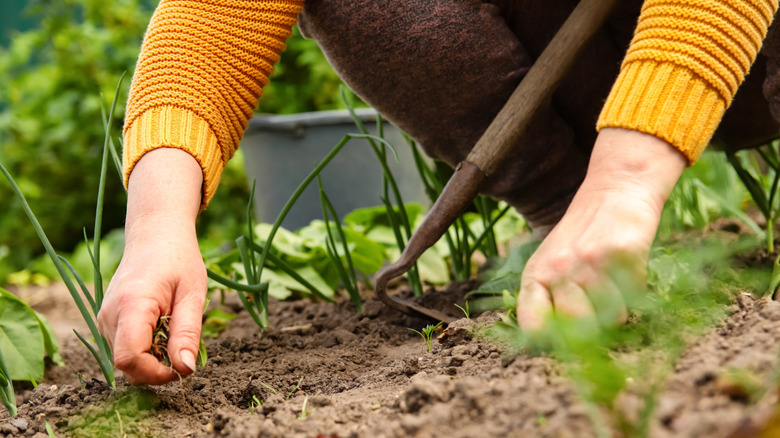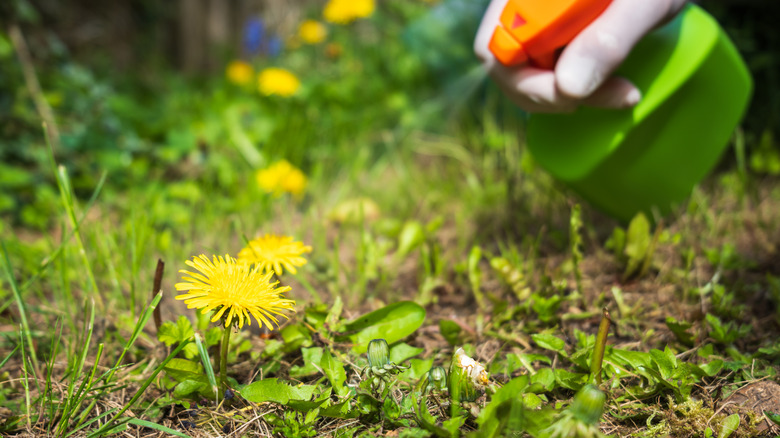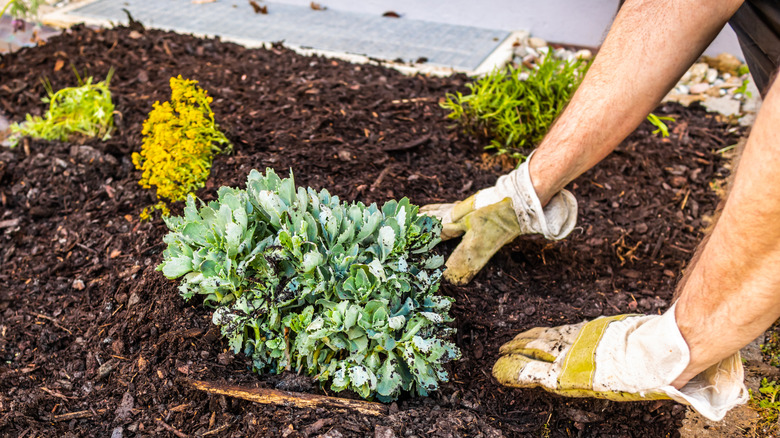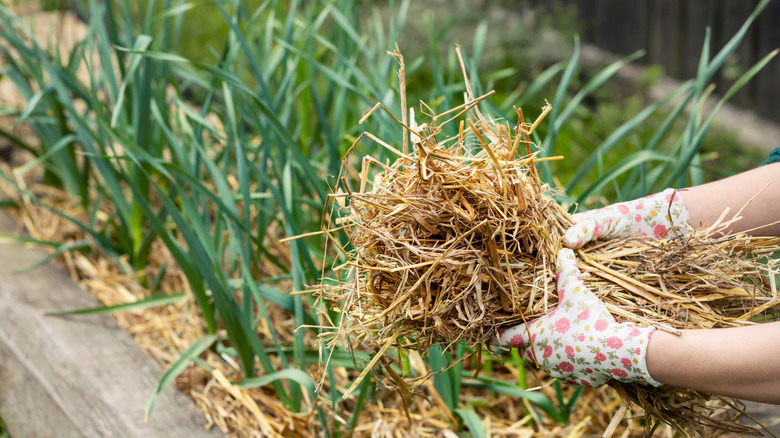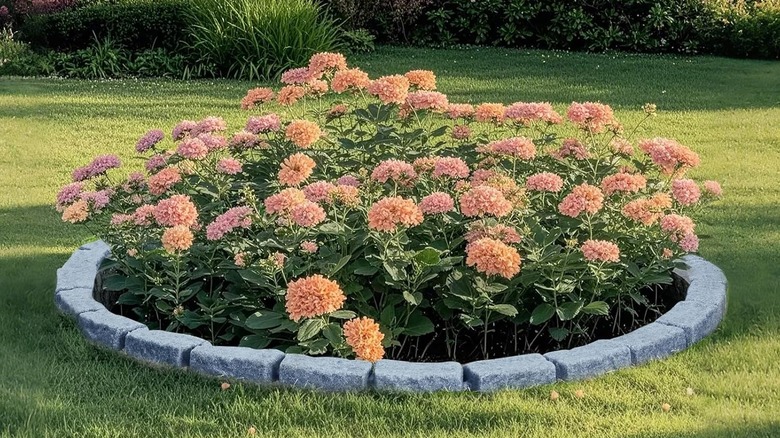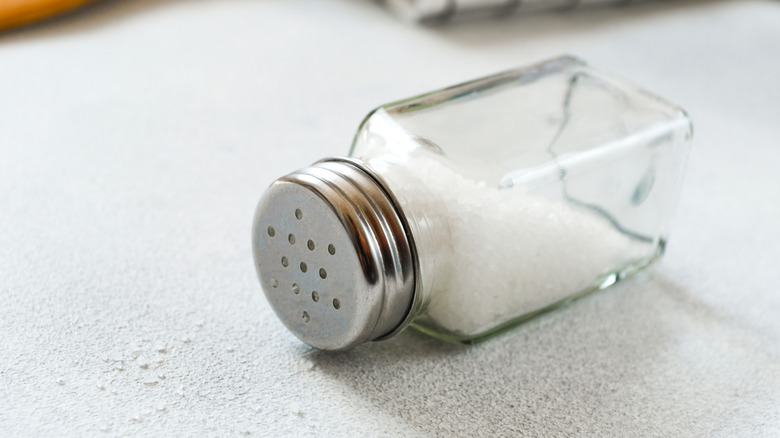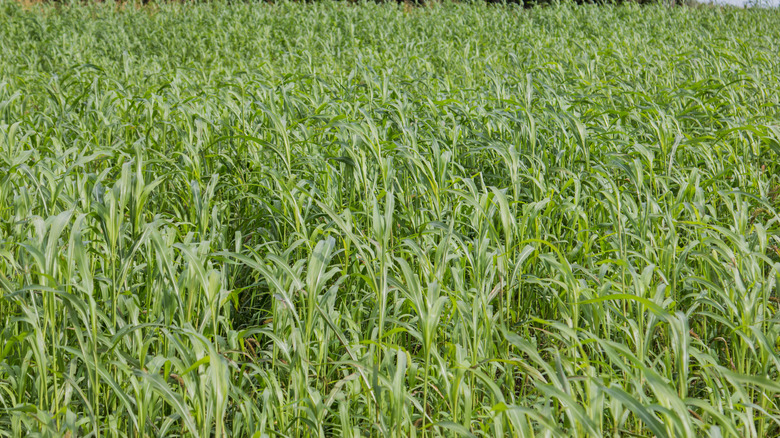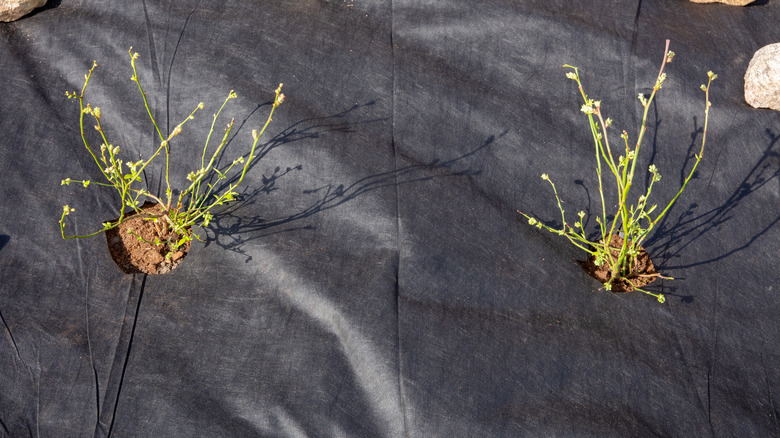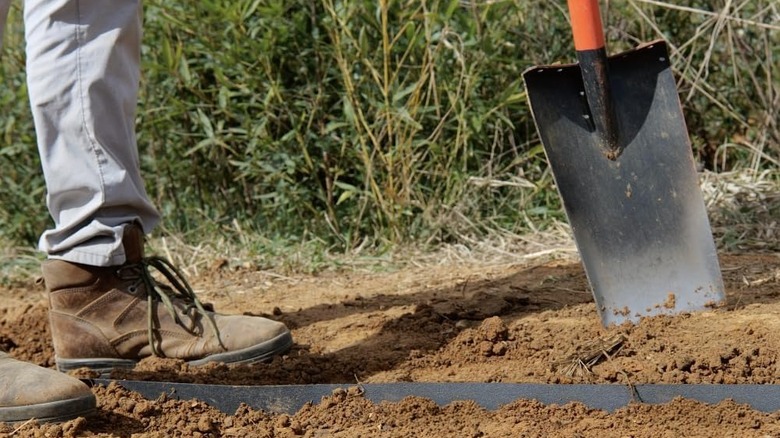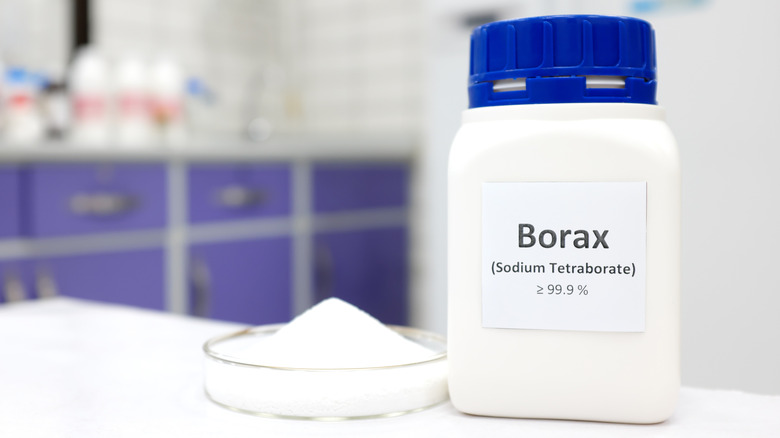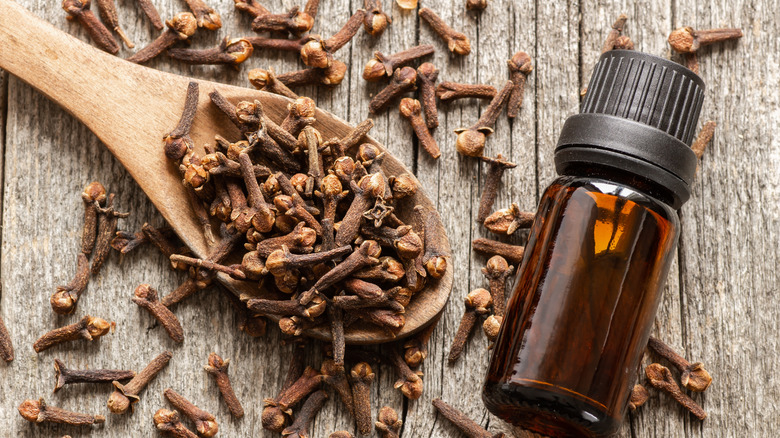7 Great Strategies For Removing Weeds And 7 That Aren't Worth Your Time
One of the most tedious tasks for homeowners is controlling weed growth. No matter how large or small a property is, weeds have the potential to invade and spread along gardens, lawns, walkways, and other outdoor areas. Fortunately, there are dozens of professional and amateur strategies for removing these unwanted plants, but that doesn't mean all of them should be pursued, as many aren't worth the time and effort.
Removing weeds requires some knowledge of what you're dealing with. All weed species are different, and some methods are more effective than others. The type of weed species, their growing habits, and how established they are make them easier or more challenging to eliminate. Households also must consider where the weeds are growing. If annual and perennial weeds are growing close to other garden plants or grass, some removal methods could take out everything in the vicinity. Read on to learn about seven great strategies that effectively remove weeds, and seven that could do more harm than good.
Do: Pour boiling water on newly emerged weeds
Before going out and investing in professional weed treatments, consider controlling weeds with common household items. A kettle, pot, or microwavable bowl filled with boiling tap water efficiently treats newly emerged weeds with shallow root systems. Heat up the water on your stovetop or in the microwave until it boils, (carefully!) carry it outside, and pour it directly over newly sprouted weed stems, leaves, and flowers. It won't kill the parts of the weed it doesn't touch, so the deep roots or untouched stems and leaves may survive and continue reproducing in your yard without further treatment.
The reason boiling water works is that it acts as a contact herbicide. The extreme heat kills plant cells, causing the plants to wilt and die. The scalding hot water doesn't discriminate — it kills weeds and all other plants within its splash zone. This method is best used on weeds that sprout beside landscape edging, in sidewalk cracks, or at a safe distance from garden plants. If using this method to water plants that are dangerously close to grass or desirable plants, use a kettle with a narrow spout that makes it easier to control the direction and flow of the hot water, such as the Chefbar Tea Kettle for Stovetop.
Don't: Till your soil in an attempt to subdue weeds
Tilling is a thousands-of-years-old gardening practice. The intention is to overturn soil to provide aeration, smother weeds, and mix nutritious fertilizer before planting new seeds or plants. While tilling provides such benefits, it also exposes underground weed seeds to the surface and places them in bright sunlight. In many cases, this leads to germination. Tilling also chops up weeds that can reproduce through cuttings, such as Canada thistle, field bindweed, and yellow toadflax. Through either of these methods, tilling potentially worsens weed infestations.
When farmers use tilling to control weed infestations, they employ large equipment that digs deep into the soil, effectively smothering all weeds and their seeds. They aren't using shallow tilling methods, like raking, which is the standard tool households have on hand. They're using rear-tine tillers or soil cultivators, which dig nearly a foot into the ground as they move. Another fact of the matter is that tilling doesn't work as a standalone weed solution. It should be step one before using other weed treatment methods. For example, till a garden several weeks before you plan on starting a new garden. After tilling and burying old weeds, new weeds will emerge from the seeds and weed cuttings on top of the soil. Pick another treatment to eliminate the newly emerged weeds, creating a weed-free garden area before continuing.
Do: Hand pull young and sporadic weed growth
Pulling individual weeds by hand may seem tedious and ineffective, but if done strategically, it does wonders for a lawn. This is the most cost-efficient and eco-friendly way to keep weeds under control, provided it's used as a preventative measure. It doesn't negatively impact nearby lawns and gardens, as it's solely extracting the weed itself. There are no chemicals or residual effects to worry about seeping into a garden or the surrounding environment either. You can also use a pocket knife, fork, or screwdriver to help dig into the soil and uproot the plant and its stringy roots.
This is an excellent method for eliminating newly sprouted weeds before they develop deep root systems, but it won't be nearly as effective for established weed infestations. You're essentially pulling a newborn weed at its most vulnerable life stage, removing the problem before it grows into something bigger. This treatment plan does require regular monitoring of a lawn and garden, since weeds grow much faster than typical garden plants. You also have to make sure you're uprooting an entire plant, and pull all of the bulbs, roots, rhizomes, and tubers in one fell swoop. Otherwise remnants can propagate and spread the weeds right under your nose.
Don't: Use a chemical herbicide except as a last resort
There is a dangerous misconception that chemical herbicides are the easy answer to weed problems. However, they have extensive downsides to consider. The surfactants and active ingredients, namely glyphosate, in popular herbicides are toxic to people, pets, and the local environment. The formula persists in soil for over a year and can leach into edible plants on your property, making it just as dangerous for people as it is for local wildlife. These chemicals can also spread up to 2,600 feet away from where they were originally applied. This means that your weed prevention methods could unintentionally impact other outdoor areas. In fact, in June 2025, a research study was published that revealed glyphosate is even more dangerous than previously thought, leading to multiple types of cancer. Before this study, more evidence came forward in December 2024 that revealed even more health issues related to neurodivergence linked to this ingredient.
Bearing these facts in mind, you should think twice before using popular weed killers. There are plenty of non-harmful ways to prevent and kill weeds. Boiling water, hand-pulling, and mulching are just a few of the many options that have less severe consequences.
Do: Consider your mulch's composition before using it to suppress weeds
Mulch is one of the top-recommended weed treatments and can be a good alternative to chemical herbicides. When packed in correctly, it smothers weeds, blocking their access to sunlight, so they can't grow and seeds can't germinate. Set fine-textured mulch, like coconut coir, finely shredded wood bark, hay, pine needles, or straw, about 2 inches deep. Larger mulch pieces, like stones and large wood chips that aren't as compacted, might need to be up to 4 inches deep to ensure weeds are fully blocked.
Mulch hinders weeds the same way dirt does: It covers weed seeds, cuttings, and plants, blocking them from sunlight. Keep in mind that mulch can also smother intentional seeds and seedlings alongside weeds, so be intentional with where you spread it. Also, be wary not to pack the mulch too compactly. As mentioned above, 4 inches is the recommendation for large and loose mulch pieces, but this can be detrimental to garden plants. When mulch is that thick and deep, it may retain too much water and limit airflow and oxygen. These factors make it harder for plants to flourish and increase their risk of root and stem rot.
Don't: Use hay or straw for mulching without taking precautions
Using a fine, shallow-packed mulch like hay or straw is less likely than deeply packed mulch to cause excessive water retention, limited oxygen, and consequent plant diseases. However, hay and straw can also cause the very problem you're attempting to solve. These organic resources often contain weed seeds, meaning they only make infestations worse. They smother pre-existing seeds, but could bring new ones into your yard. This is especially true if you buy hay that isn't advertised as seed-free.
Straw is a better option, since it contains minimal seeds compared to hay, as they're just the hollow stalks from crops that've already been harvested. Hay, on the other hand, is grass grown for livestock, so it's hard to not get at least some of the grass seed. You can remedy this by looking for products that are certified weed-seed free. You can find brands certified by the North American Invasive Species Management Association (NAISMA ) to be noxious weed-free in their online brand database. When out shopping, keep an eye out for brands at popular retailers that are mostly seed-free, such as Tractor Supply's EZ-Straw Seeding Mulch, which is 99% weed-free.
Do: Install edge barriers to control the spread of weeds
Manufactured methods of weed control aren't always bad for the environment. Edge barriers serve as a physical defense against weeds, blocking unwanted plants from invading gardens, playgrounds, and yards. It also has aesthetic value, as attractive garden edging enhances landscape design.
Most garden edging doesn't need extensive work to install. You dig a shallow trench, insert the edging, and bury it so it's sturdy in the ground. The barrier stops weeds from spreading over, as they're more likely to spread in a direction that isn't inhibited by plastic, wood, stone, vinyl, or other materials. Garden edging comes in many styles, but avoid metal wiring — this style won't stop weeds, as they can easily grow between the wires. Instead, choose edging without gaps, like TEANTECH Garden Edging Border or CiAmore Wood Garden Edging. A small downside is that they aren't 100% effective against weed seeds and cuttings, which can still find a way over by rain, wind, and through clinging to wildlife. Still, this strategy does help, especially when paired with other methods.
Don't: Use DIY household weeding formulas with salt
There are dozens of natural, easy-to-make weed control recipes on the internet, and many of them have been tested and proven effective. Feel free to test out these formulas as you wish, but be wary of concoctions containing household salt. Salt does kill weeds, but it has other lasting repercussions to be aware of: It also kills all surrounding plants it touches. When poured on soil, it is absorbed into the earth. Repetitive applications raise the salinity of the soil, making it less hospitable for weeds, but for most other plants too. Salt is also highly soluble, meaning soil can absorb it easily, and it can spread over time. This means it could spread to your garden and the surrounding ecosystem.
Many DIY weed control mixtures use salt as an ingredient, but there are also plenty that don't. Vinegar and soap don't have the same detrimental effects on soil, though vinegar is also non-selective, so be careful not to get it on wanted plants. Boiling water and pulling weeds are also two methods with minimal long-term repercussions.
Do: Plant competitive cover crops to overpower and smother weeds
Try beating weeds at their own game. Instead of letting these unwanted plants forge the offensive attack, assemble your own offense in the form of cover crops. Make sure you plant these crops correctly so they don't get out of control and become weeds themselves. Use a mixture of seeds to encourage competition between these crops and the weeds. Most gardeners also let the cover crops die from winter exposure. This weakens them, so they aren't a threat of becoming weeds the following year. Some examples of effective cover crops include rye, buckwheat, oats, and sorghum-sudangrass.
The reason cover crops are so effective is that they add another competitor into your local ecosystem. They compete with weeds for sunlight, moisture, and soil, and you can use them to fill empty space in your landscape without having to worry about undesirable weeds taking over your ornamental or vegetable garden. The main downside of this strategy is that cover crops are more effective on annual weeds than perennials. Since perennials primarily spread underground, their extensive root systems may survive despite the presence of a cover crop on the surface. They won't die in the wintertime alongside the cover crop; rather, they go dormant and re-emerge the following year.
Don't: Solely rely on landscape fabric to suppress weeds
Landscaping fabric is a great asset in a weed control program. However, like other weed strategies, it's more effective when paired with other methods. Landscaping fabric is fallible. When you place soil and mulch on top of it, weeds will still start growing in this soil beneath the fabric. If gone unchecked, perennial weeds can even grow through the fabric, and over time, weeds may find a way into the soil above landscape fabric.
Even though landscaping fabric isn't a perfect solution on its own, don't pass it up completely. These materials do control annual weeds very well, and they can suppress perennial weeds for a time. They're also easy to come by, as they're sold at many major garden centers, local nurseries, and at online retailers, such as the Winisok Weed Barrier Landscape Fabric on Amazon.
Do: Install a root barrier for fast-growing and aggressive weed species
Many people turn to landscape edging, since it's easy to install. While often effective, edging doesn't always protect against deep roots of established weeds. In cases like this, a root barrier is far more effective. Root barriers form a protective casing around buildings, gardens, and underground systems. Weed roots have to grow all the way under them and back towards the surface again, making it harder for them to spread in unwanted areas. Unlike edging, these garden accessories don't always prioritize aesthetics. The tall, black plastic pieces aren't pretty to look at, even if they're mostly buried beneath the ground. They should stand at least 3 inches above ground to be effective.
They're often made of plastic, herbicide-treated fabric, or a similar material that weeds cannot permeate. This makes them especially effective against notoriously aggressive weeds like ground elder and horsetail. Due to the heavier, thicker, and taller material, root barriers can cost more than standard garden edging. In example Joewuzun's 36-inch 25-foot Tree Root Barrier is $115 more than a plain border of the same length.
Don't: Use borax to stop weed growth
Just a sprinkle of borax can kill unwanted weeds, but it comes with other downsides homeowners should be aware of. Too much boron in the soil affects surrounding plants by causing things like leaf burn or yellowing of leaves. Boron also doesn't dissipate over time and can spread to other places in your garden. Using it repeatedly to kill emerging weeds also makes soil inhospitable for plant life. Note that this substance is unsafe for people and pets. If a child or animal accidentally inhales or ingests it, there are toxic side effects. There's one final reason why borax isn't the best strategy to remove weeds: The effects aren't consistent, and many environmental factors affect how well borax works.
Given these many arguments against borax, look for other household ingredients that work against weeds. The previously mentioned boiled water trick kills weeds without seeping into soil. Gluten meal is also a potential contender for DIY weed removal treatments, which you can learn more about below.
Don't: Apply corn gluten meal on sprouted weeds or desired germinating plants
Corn gluten meal is considered a pre-emergent herbicide and fertilizer, giving it a dual purpose in the garden. It nourishes plants while potentially protecting them from weeds. University studies have revealed that it only works when there is a period of desiccation, meaning it won't work on consistently moist soil. It essentially smothers weed seeds in the same manner mulch does. However, this also means that it can negatively impact garden seeds too. Overall, this is not a direct weed control method and has not yielded reliable results in field-based university studies. It's best used for prevention and alongside other more direct strategies.
You can use corn gluten to help keep weeds of your lawn as long as they haven't started growing yet. This method works on weed seeds, not sprouted plants, and can prevent more seeds from germinating in the future. According to Iowa State University, it's reportedly useful for controlling barnyard grass, crabgrass, dandelion, foxtails, lambsquarter, pigweed, purslane, and smartweed seeds. Sprinkle granulated corn gluten meal over a flower or vegetable garden after your wanted plants have taken root and have begun to grow. The granules should also be laid in early spring before weed seeds have a chance to sprout. This can make it tricky to stop weed seeds from germinating without also hindering garden plants that are also being grown from seed.
Do: Use clove oil to kill young weeds and visible growth
Essential oils have several uses around and outside of your home, including for weed control. It isn't as effective as glyphosate, but is a lot less toxic. A spray bottle mixture with about 20% clove oil works on smaller weeds with one to two leaves. The more you increase the concentration, the more effective it is. This is based on a USDA-ARS study that tested the effects of clove oil on common purslane, nettle, and rye weeds.
Clove oil works as a contact herbicide, killing the weeds it comes in direct contact with. It immediately affects targeted weeds, but doesn't have any residual effects. This makes it a great option for targeting specific areas, since you don't have to worry about the clove oil building up and spreading to other parts of your yard over time. However, it's also not a permanent solution, and must be reapplied regularly as needed to control new weed growth.
